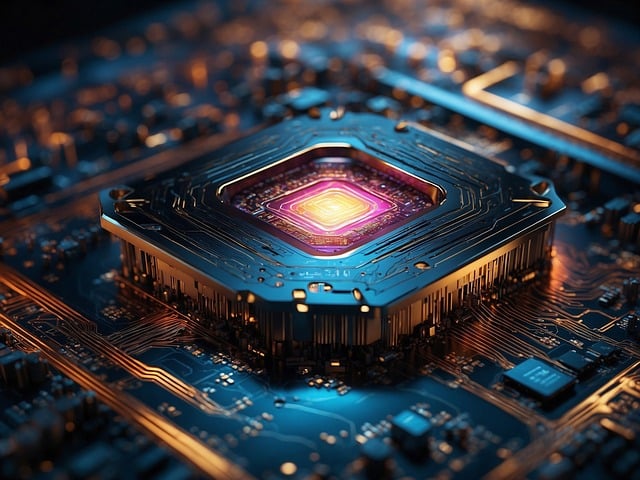Overview of CPU Architectures
Brief History of CPU Development
CPUs are the hearts and minds that make our digital devices tick. It pays to know what is out there so let’s take a looky see at the field of popular CPU architectures.
Development of CPU architectures has evolved over the years, with major players like Intel, AMD, ARM, and others shaping the landscape. The introduction of x86 architecture by Intel with the 8085 microprocessor marked a significant milestone in CPU history. Subsequently, AMD joined the game and eventually developed the 64-bit x86_64 architecture, surpassing Intel. On the other hand, ARM introduced its own CPU ISA, with subsets like AArch32 and AArch64 catering to different memory bus widths. RISC-V, as an open-source CPU ISA, is gaining traction for its flexibility and innovation.
Types of CPU Architectures
With various CPU architectures in existence, understanding the differences is vital. Here is a breakdown of the main CPU architectures and their subsets:
| x86 | ARM |
| RISC-V | PowerPC |
Understanding the distinctions between these CPU architectures can help in choosing the right platform for your computing needs. Each architecture offers unique features and capabilities, catering to a diverse range of applications. Any decision related to CPU architecture should be based on the specific requirements and performance expectations.
Key Takeaways:
- CPU Architectures: The terms arm, aarch64, amd64, x86_64, and x86 refer to different CPU architectures or Instruction Set Architectures (ISAs) that dictate how a computer’s binary instructions are interpreted.
- x86 Architecture: Developed primarily by Intel, the x86 architecture has subsets like i386 for 32-bit CPUs and x86_64 for the 64-bit CPUs developed by both AMD and Intel.
- ARM Architecture: Created by ARM Holdings, ARM architecture includes AArch32 for 32-bit CPUs and AArch64 for the 64-bit CPUs, with variations like arm, arm64, ARMv8, and ARMv9 also used interchangeably.
- RISC-V Architecture: An open-source CPU architecture, RISC-V offers 32-bit and 64-bit versions, with customizations available through different extensions like rv64i for the base integer instruction set.
- PowerPC Architecture: Initially popular in Apple products, PowerPC offers options like powerpc for 32-bit CPUs, ppc64 for 64-bit big-endian CPUs, and ppc64le for 64-bit little-endian CPUs.
x86 (AMD/Intel)
History of x86 architecture
While x86 architecture originated with Intel’s creation of the 8085 micro-processor, AMD later entered the scene by following Intel’s lead. This eventually led to the development of the 64-bit architecture, surpassing Intel’s initial design.
Key features of x86 architecture
The x86 architecture offers both 32-bit (i386) and 64-bit (x86_64) variants, allowing for compatibility with a wide range of software applications. Some key features of the x86 architecture include:
- 32-bit and 64-bit support: The ability to run both 32-bit and 64-bit instructions.
- SIMD instructions: Enhanced parallel processing capabilities through instructions like AVX and AVX2.
Though the transition from 32-bit to 64-bit brought about improvements, the x86 architecture maintained backward compatibility, allowing older software to run on newer systems.
Extra intel
Intel’s x86 architecture revolutionized computing by offering a versatile platform that could handle a wide range of applications. Its support for both 32-bit and 64-bit instructions ensured compatibility with legacy software while enabling enhanced performance for modern applications.
ARM
History of ARM architecture
One of the most prominent CPU architectures in the world is ARM. Originally developed by ARM Holdings, ARM stands for Advanced RISC Machine. The architecture was specifically designed for low power consumption and is widely used in mobile devices, such as smartphones and tablets.
Key features of ARM architecture
An necessary aspect of ARM architecture is its energy-efficient design, making it ideal for portable devices. Some key features of ARM architecture include:
- Low Power Consumption: ARM processors are known for their energy efficiency, making them perfect for mobile devices.
- RISC Architecture: The Reduced Instruction Set Computing (RISC) design of ARM processors simplifies instructions for faster processing.
- Scalability: ARM architecture is scalable, allowing for the design of processors for various applications.
Knowing these key features is crucial for understanding why ARM is the architecture of choice for many mobile and portable devices.
ARM instruction set architecture (ISA)
An necessary component of ARM architecture is its Instruction Set Architecture (ISA). This defines how the binary instructions are interpreted by the CPU. The ARM ISA has evolved over several generations, with the latest being ARMv9. Each generation introduces new features and optimizations to improve performance and efficiency.
ARM in mobile devices
With the rise of mobile technology, ARM processors have become ubiquitous in smartphones, tablets, and other portable devices. The efficiency and performance of ARM architecture make it a preferred choice for mobile devices, where power consumption and battery life are critical factors. Notebook computers become truly mobile when they run with ARM64, without the heat or thermal throttling that Intel and AMD are famous for.
RISC-V
History of RISC-V architecture
After discussing x86, ARM, and PowerPC architectures, let’s probe into the relatively new RISC-V architecture. With the rise of open-source hardware initiatives, RISC-V has emerged as a free and open ISA, allowing companies and individuals to design their own CPUs based on this architecture.
Key features of RISC-V architecture
One of the key features of RISC-V architecture is its simplicity and modularity, making it attractive for a wide range of applications. The ISA offers different standard extensions that can be added to customize the CPU design according to specific requirements. The flexibility of RISC-V architecture allows for innovation and adaptation in various fields such as embedded systems, high-performance computing, and IoT. Any design based on RISC-V can benefit from the vast ecosystem and community support that continues to grow around this architecture.
- Flexibility: Modular design allows for customization
- Standard extensions: Options to add specific features to the CPU
- Ecosystem support: Growing community and resources available
The RISC-V architecture’s open nature fosters collaboration and innovation in the hardware industry. This openness has led to a variety of implementations and designs based on the RISC-V ISA, expanding its presence in different market segments.
RISC-V instruction set architecture (ISA)
One of the appealing aspects of the RISC-V architecture is its instruction set architecture (ISA). One unique feature of RISC-V is the flexibility it offers in terms of extensions. The base integer instruction set (rv64i) provides a solid foundation, and additional extensions can be included as needed for specific functionalities or performance enhancements.
Another noteworthy aspect of the RISC-V ISA is the convention followed for extension naming. By adhering to a specific order of extension names, RISC-V ensures consistency and clarity in design and implementation.
Open-source nature of RISC-V
RISCV architecture’s open-source nature has contributed to its rapid adoption and development within the industry. This accessibility has enabled a wide range of companies and individuals to explore and experiment with RISC-V-based designs, leading to a thriving ecosystem of innovation.
This openness not only fosters collaboration but also encourages transparency and accountability within the hardware community. Any design created using RISC-V benefits from the collective knowledge and expertise shared among enthusiasts and professionals in this field.
PowerPC
History of PowerPC architecture
The PowerPC architecture was a popular choice in the early days for companies like Apple, IBM, and Motorola. Initially, it was the CPU architecture used in Apple’s consumer lineup until they made the switch to Intel’s x86 architecture. With the ability to have both big-endian and little-endian memory ordering, PowerPC offered flexibility to ensure compatibility with different memory ordering systems.
Key features of PowerPC architecture
An overview of key features of the PowerPC architecture includes:
- Big-endian and little-endian memory ordering options
- Architecture options include powerpc, ppc64, and ppc64le
- Historically used in servers and some consumer devices
Any system using PowerPC must consider the memory ordering option and choose the appropriate architecture for their specific needs.
PowerPC architecture features a unique blend of performance and compatibility, making it a suitable choice for various computing environments. With options for both big-endian and little-endian memory ordering, PowerPC architecture offers flexibility in system design.
PowerPC instruction set architecture (ISA)
To understand the PowerPC architecture fully, it is necessary to probe into the details of its instruction set architecture (ISA). The ISA defines how instructions are interpreted by the CPU, playing a crucial role in system performance and compatibility.
PowerPC ISA encompasses a range of features and instructions tailored to specific computing tasks. From basic arithmetic operations to complex memory management tasks, the PowerPC ISA provides a comprehensive set of instructions for efficient processing.
PowerPC in gaming consoles
History shows that PowerPC architecture found its way into various gaming consoles, offering a blend of performance and compatibility suitable for gaming environments. For instance, notable gaming consoles like the Microsoft Xbox 360 and the Nintendo Wii were powered by PowerPC architecture, showcasing its versatility in delivering high-performance computing for gaming enthusiasts.
Final Words
With these considerations, it becomes clear that the world of CPU architectures is diverse and complex, with various subsets and versions catering to different requirements and technologies. From the widely used x86 architecture offered by AMD and Intel to the ARM architecture popular in mobile phones, each architecture has its unique features and specifications. The emergence of open-source options like RISC-V adds to the diversity, providing new opportunities for innovation and accessibility in CPU design.
As technology evolves and demands for higher performance and energy efficiency increase, understanding the differences between CPU architectures becomes even more crucial. Whether it’s stepping into the intricacies of SIMD instructions or exploring the nuances of memory bus widths, a deeper comprehension of these architectures can lead to more informed decisions and optimizations in software development and hardware design. In this ever-changing landscape of computing, the knowledge of CPU architectures serves as a cornerstone for progress and innovation.
I would like to say that my personal favorite these days is ARM64 both for it’s speed and power efficiency. I have always been a fan of mobile computing, but that only works if you can unplug and go mobile. Both Intel and AMD have been utterly pathetic in this realm, so ARM64 is taking them to task and making mobile but powerful processors that make mobile computing truly mobile.
If you enjoyed this article, please bookmark our main page which features constantly updated tech news from around the Internet.













